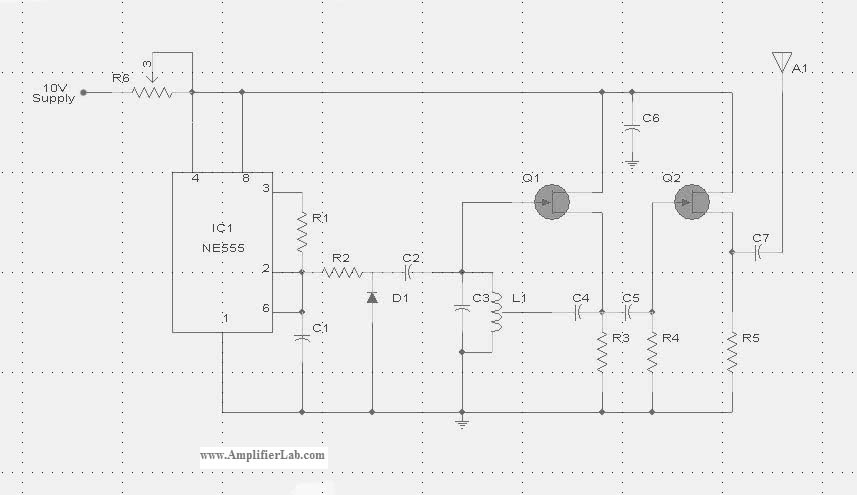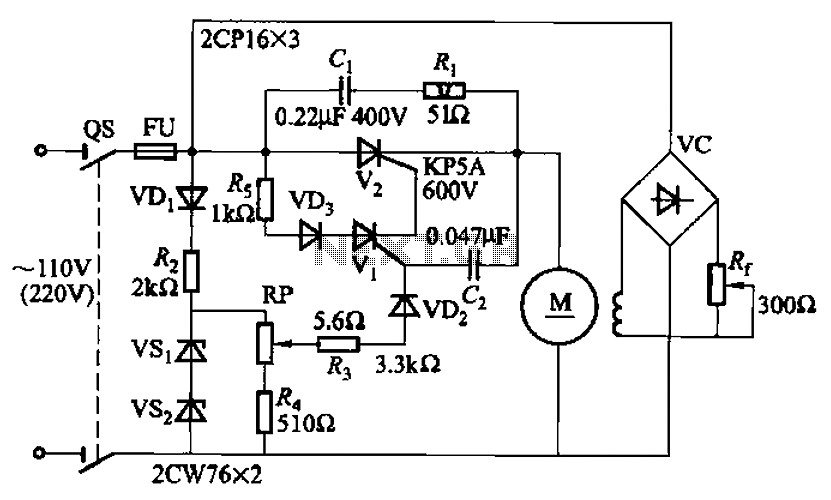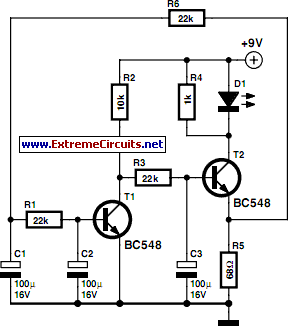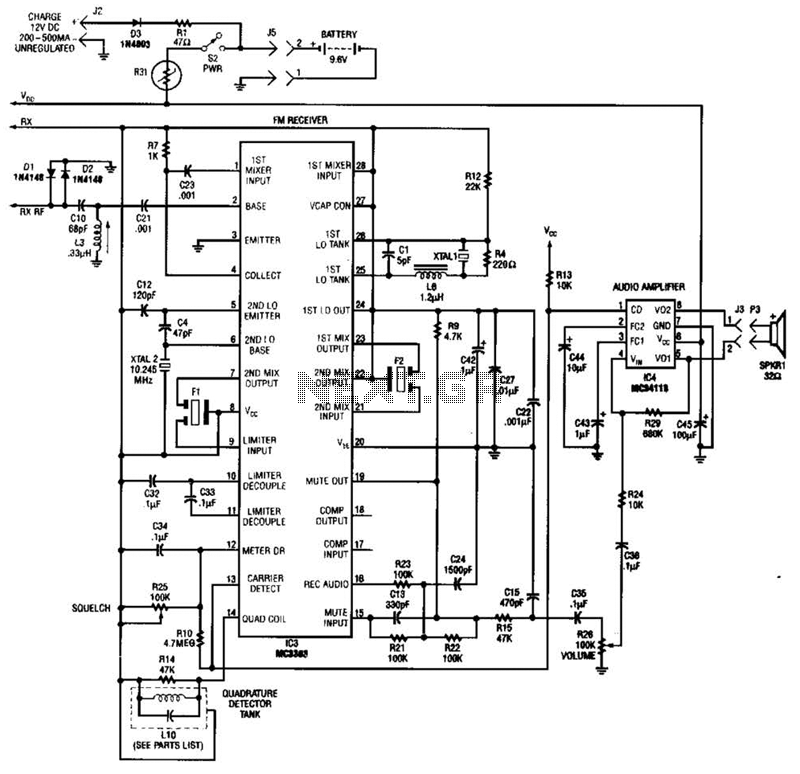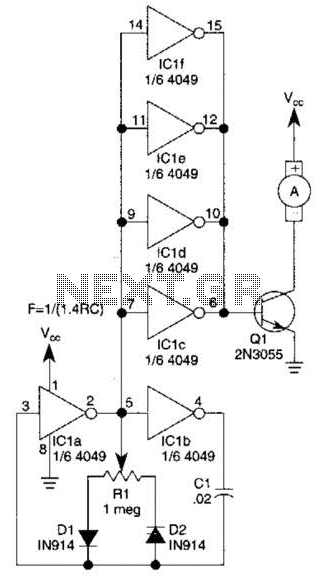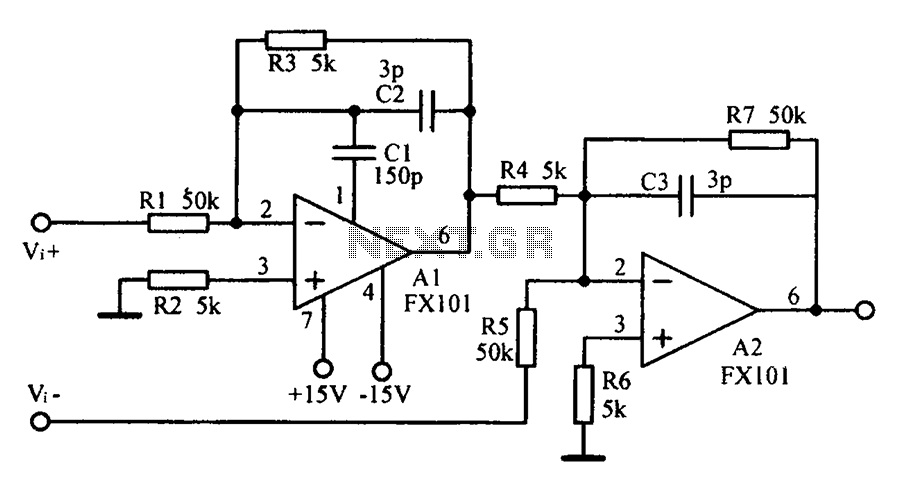
Three Channel Audio Mixer Circuit
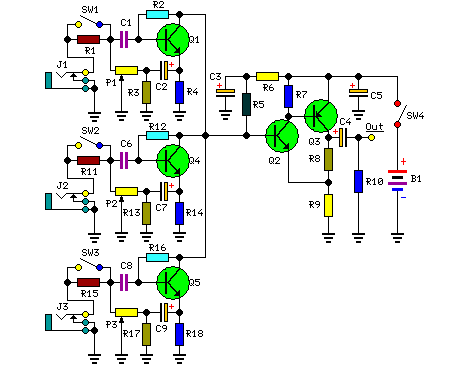
The modular Portable Mixer design presented on these web pages has gained popularity among many amateurs. However, some users have requested a simpler device specifically for mixing mono signals. This revised design aims to meet those requirements, incorporating three inputs with switchable high/low sensitivity and unique level-control circuits. These features ensure high overload margins and low noise levels that are proportional to gain-level settings. The low current consumption, achieved through a straightforward five-transistor circuit, enables the Mini Mixer to operate for extended periods on a standard 9V PP3 battery.
The Mini Mixer is designed to cater to users who require a compact and efficient solution for mono signal mixing. The three input channels facilitate the connection of various audio sources, such as microphones or musical instruments. Each input is equipped with a sensitivity switch that allows the user to select between high and low sensitivity modes, accommodating a range of signal levels and ensuring optimal performance regardless of the source.
The unique level-control circuits employed in this design are engineered to provide a high degree of linearity and stability, which is crucial for maintaining audio quality during mixing. This design minimizes distortion and noise, resulting in a clean output signal. The proportionality of noise levels to gain settings is particularly advantageous, as it allows users to adjust the mix without introducing unwanted artifacts.
The five-transistor configuration is a key element of the Mini Mixer's low current consumption. By utilizing a minimal number of components, the design achieves efficiency while maintaining functionality. This makes the Mini Mixer an ideal choice for portable applications, as it can be powered by a common 9V PP3 battery, offering extended operational life suitable for field use or mobile setups.
Overall, the Mini Mixer stands as a practical solution for users seeking a straightforward, reliable, and efficient mixer for mono signals, combining user-friendly features with robust performance in a compact format.Although the modular Portable Mixer design available on these web pages has become a hit for many amateurs, some correspondents required a much simpler device, mainly for mixing mono signals. This design should fulfil their needs, featuring three inputs with switchable high/low sensitivity and unusual level-control circuits, providing high overload margins and low-noise figures, proportional to gain-level settings.
Low current consumption due to a simple, five-transistor circuitry, allows the Mini Mixer to be powered by a common 9V PP3 battery for many hours.. 🔗 External reference
The Mini Mixer is designed to cater to users who require a compact and efficient solution for mono signal mixing. The three input channels facilitate the connection of various audio sources, such as microphones or musical instruments. Each input is equipped with a sensitivity switch that allows the user to select between high and low sensitivity modes, accommodating a range of signal levels and ensuring optimal performance regardless of the source.
The unique level-control circuits employed in this design are engineered to provide a high degree of linearity and stability, which is crucial for maintaining audio quality during mixing. This design minimizes distortion and noise, resulting in a clean output signal. The proportionality of noise levels to gain settings is particularly advantageous, as it allows users to adjust the mix without introducing unwanted artifacts.
The five-transistor configuration is a key element of the Mini Mixer's low current consumption. By utilizing a minimal number of components, the design achieves efficiency while maintaining functionality. This makes the Mini Mixer an ideal choice for portable applications, as it can be powered by a common 9V PP3 battery, offering extended operational life suitable for field use or mobile setups.
Overall, the Mini Mixer stands as a practical solution for users seeking a straightforward, reliable, and efficient mixer for mono signals, combining user-friendly features with robust performance in a compact format.Although the modular Portable Mixer design available on these web pages has become a hit for many amateurs, some correspondents required a much simpler device, mainly for mixing mono signals. This design should fulfil their needs, featuring three inputs with switchable high/low sensitivity and unusual level-control circuits, providing high overload margins and low-noise figures, proportional to gain-level settings.
Low current consumption due to a simple, five-transistor circuitry, allows the Mini Mixer to be powered by a common 9V PP3 battery for many hours.. 🔗 External reference
Warning: include(partials/cookie-banner.php): Failed to open stream: Permission denied in /var/www/html/nextgr/view-circuit.php on line 713
Warning: include(): Failed opening 'partials/cookie-banner.php' for inclusion (include_path='.:/usr/share/php') in /var/www/html/nextgr/view-circuit.php on line 713
